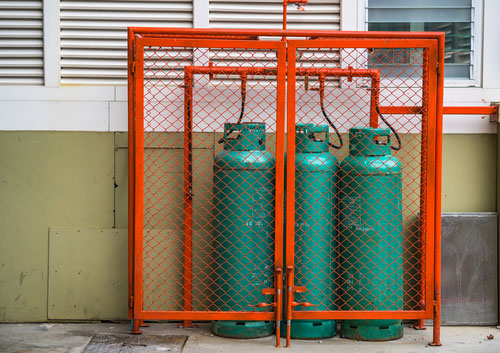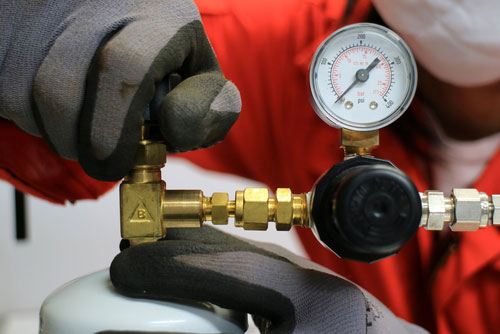May 27, 2019
Gas bottles, gas tanks, or gas cylinders are widely used in various industrial applications. That’s why proper safety handling is important when receiving, handling, and disposing of gas bottles. As soon as a new gas bottle is received, you need to inspect it thoroughly to make sure it is safe to use.
In this post, you’ll learn some important things to consider when handling gas bottles safely.

According to the United States Occupational Safety and Health Agency or OSHA and the Department of Transportation or DOT, all compressed gases should be labeled. As soon as you receive or use a new gas bottle, you need to check the safety markers to ensure that you don’t have a defective or poor-quality gas tank.
Reject gas cylinders without complete identification, test date, cap, and markings. Each gas tank should be marked by a tag or label with the list of contents stamped or stenciled on the bottle. Also, reject those with inoperable or rusted caps, and if you notice signs of leakage or damage. Safety precautions should be carried out when storing gas cylinders, such as labeling them with appropriate dates and using high-quality gas bottle storage cages.
Here are some tips when checking for safety markers of gas bottles:

Industrial settings involve using oil and natural gas, and safe handling practices should be a priority. When you’re handling and transporting gas cylinders in industrial settings, you have to move or transport using a suitable cart or hand truck. Gas bottles should be used, stored, and transported in an upright position with the valve on top. The gas tank should be securely fastened or supported by chains, straps, stands, or racks to avoid falling or from being knocked over.
Here are the other safety gas cylinder handling practices that should be followed at all times:
Gas bottles have high internal pressure that creates projectiles if incorrectly stored, causing valve damage. Leaking gas cylinders or gas spills create an oxygen-deficient atmosphere and atmospheric hazard. Because of the hazards involved with gas cylinders, you need to store gas tanks properly.
Here are some safety tips when storing gas bottles:
If you are working in an industrial setting or you have an industrial business, it’s important to consider the safety markers, safe handling, and proper storage of gas bottles or gas cylinders. By following the tips above, you’ll reduce the risk of fire and other types of gas-related accidents.
In this episode, I sat down with Beejan Giga, Director | Partner and Caleb Emerson, Senior Results Manager at Carpedia International. We discussed the insights behind their recent Industry Today article, “Thinking Three Moves Ahead” and together we explored how manufacturers can plan more strategically, align with their suppliers, and build the operational discipline needed to support intentional, sustainable growth. It was a conversation packed with practical perspectives on navigating a fast-changing industry landscape.